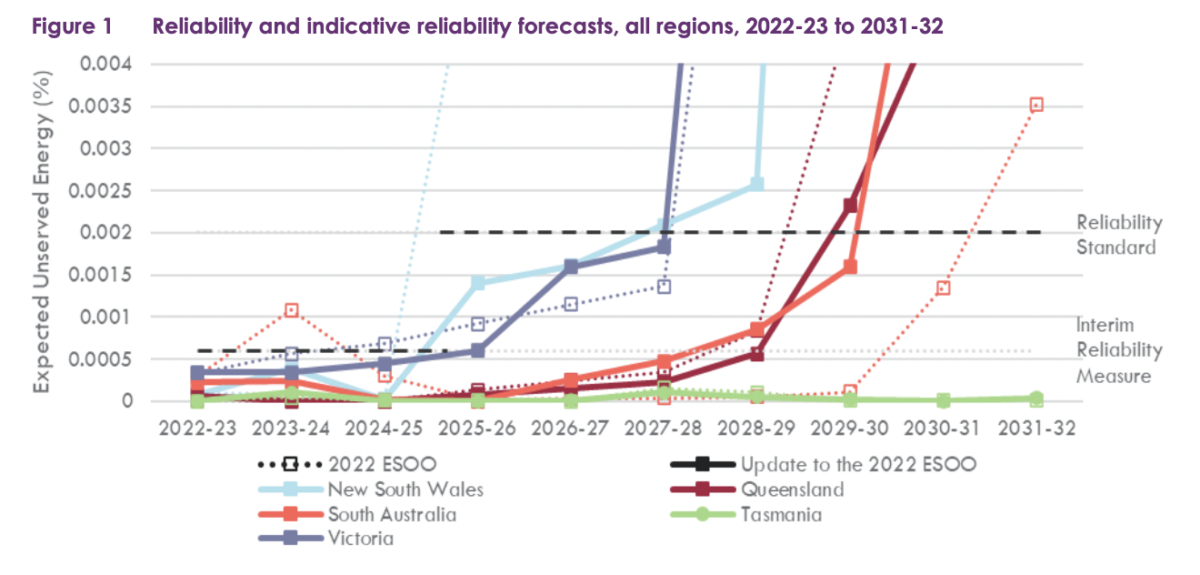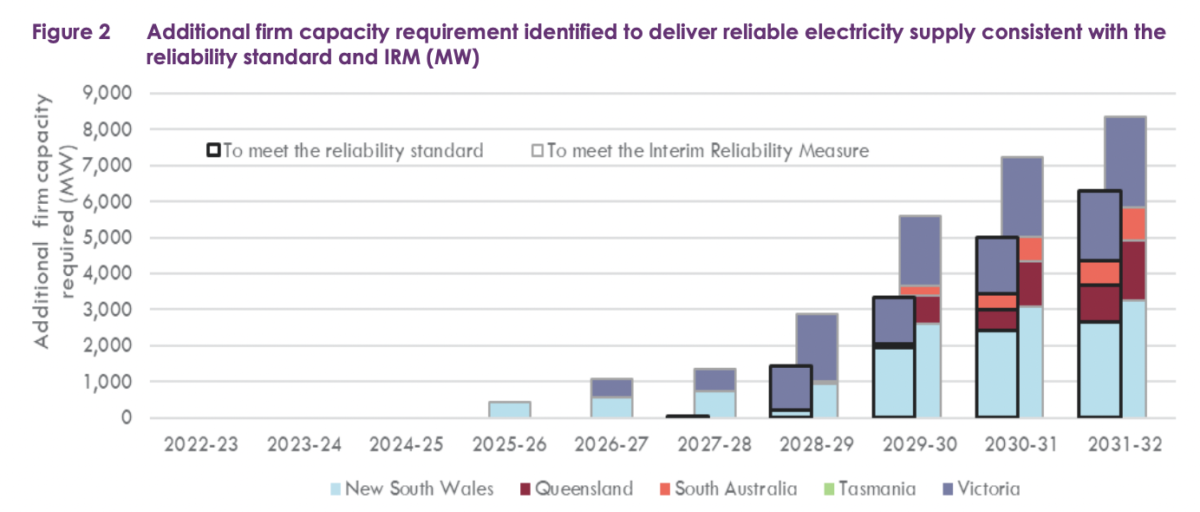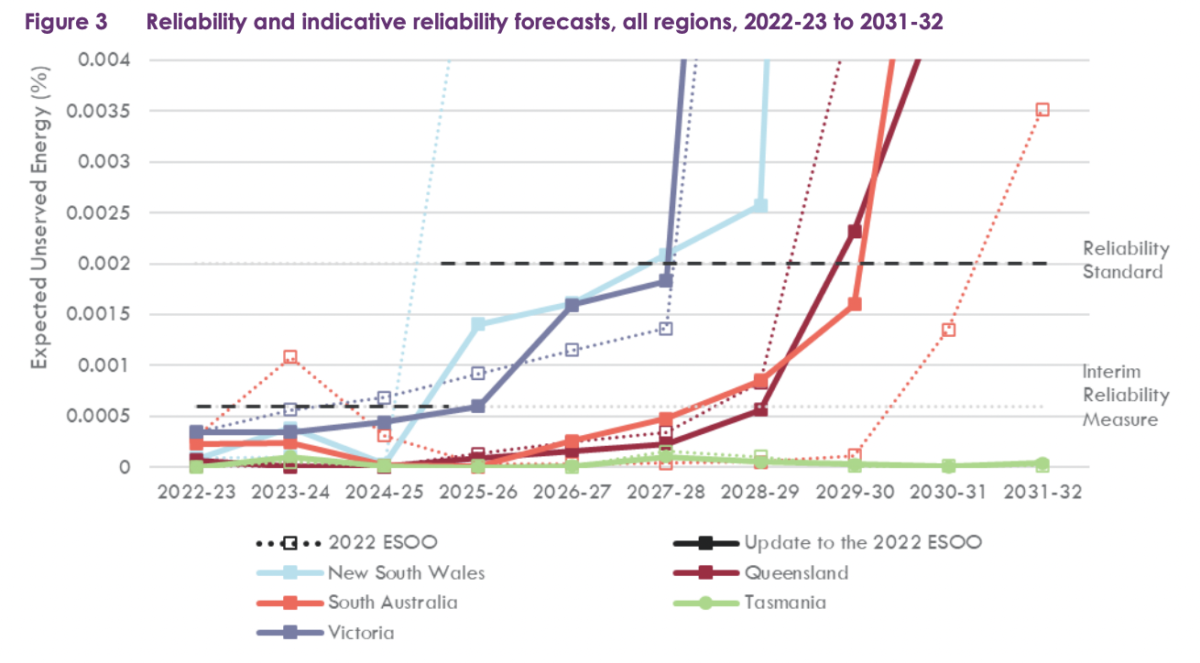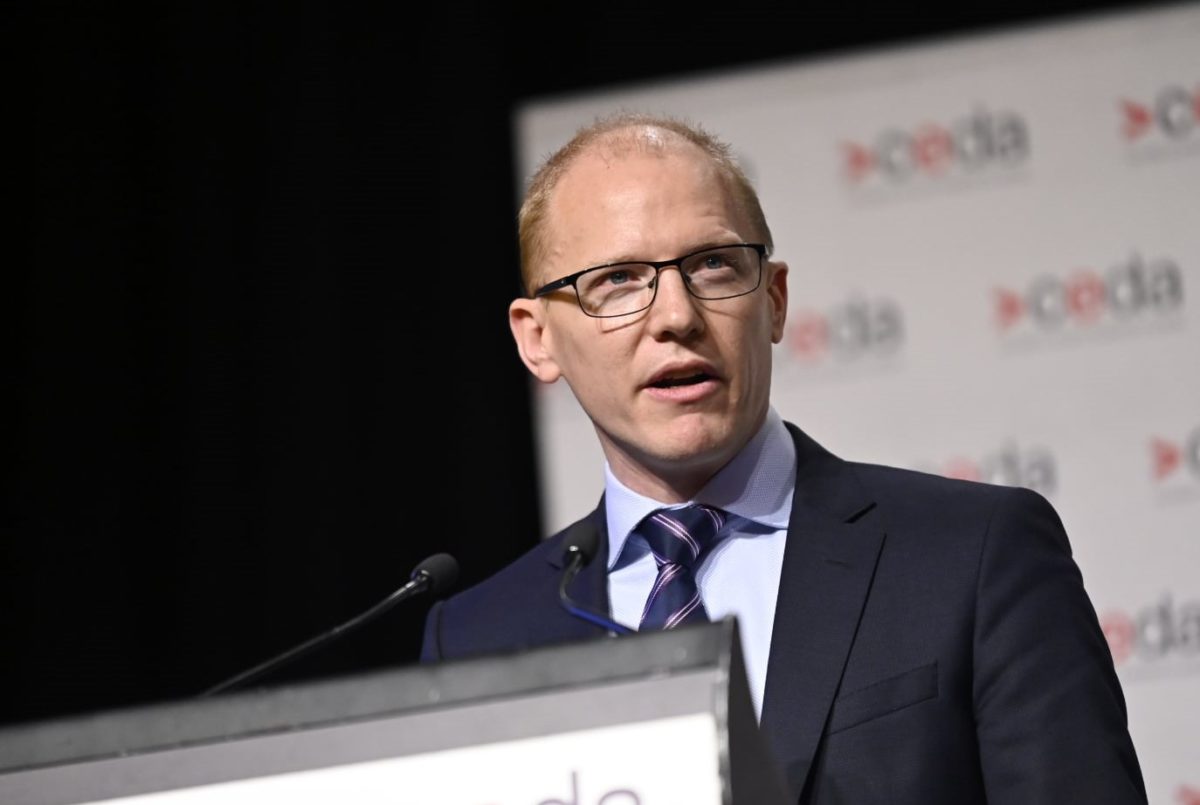The Australian Energy Market Operator (AEMO) has released an update to its 2022 Electricity Statement of Opportunities report published last August to take into account new projects and delays.
While the long-term vision remains (somewhat) precarious, the short-term outlook has actually improved, with the commitment of a number of big battery projects – perhaps most notably the Waratah Super Battery in New South Wales, which AEMO credited with markedly decreasing reliability risks in both NSW and Queensland.

Image: AEMO
While big battery projects have shift reliability concerns for the next few years, AEMO wants to see more solid generation, transmission and storage projects realised before it can be secure Australia won’t face reliability gaps in the next decade as coal and gas generators continue to exit.
To be clear – Australia’s project pipeline is ample. AEMO’s concern is that while there is much enthusiasm, the rate at which actual new projects are joining the grid still leaves margin for error.

Image: AEMO
As AEMO notes, since releasing its modelling last August, 1,326 MW of wind and 461 MW / 604 MWh of battery storage projects have met its commitment criteria.
“The NEM has a strong pipeline of proposed generation and storage projects, totalling three times today’s generation capacity, with large-scale solar, wind and batteries accounting for 86%,” AEMO CEO Daniel Westerman said.
“Investment in firming generation, such as pumped hydro, gas and long-duration batteries, is critical to complement our growing fleet of weather-dependent renewable generation to meet electricity demand without coal generation,” he added.

Image: AEMO
South Australia – highest renewable generation, lowest reliability gap
Of all the states in Australia’s National Electricity Market (NEM), the grid which serves New South Wales, Victoria, South Australia, Queensland, and Tasmania, South Australia’s reliability gap is second only to Tasmania, which has had any reliability concerns long-quelled by existing pumped hydro projects.
This is a noteworthy state of affairs because South Australian grid has the highest percentage of variable renewables in Australia – and likely the highest percentage for any similar gigawatt-scale grid in the world.
On average, South Australia was powered by 68.3% renewables in the 2022 financial year, up 7% from the previous year. The state is well on its way to its target of meeting 100% of demand from renewables by 2030.
The powerhouse state defies renewable critics, who have long claimed variable generation inherently leads to poor reliability.
This content is protected by copyright and may not be reused. If you want to cooperate with us and would like to reuse some of our content, please contact: editors@pv-magazine.com.









By submitting this form you agree to pv magazine using your data for the purposes of publishing your comment.
Your personal data will only be disclosed or otherwise transmitted to third parties for the purposes of spam filtering or if this is necessary for technical maintenance of the website. Any other transfer to third parties will not take place unless this is justified on the basis of applicable data protection regulations or if pv magazine is legally obliged to do so.
You may revoke this consent at any time with effect for the future, in which case your personal data will be deleted immediately. Otherwise, your data will be deleted if pv magazine has processed your request or the purpose of data storage is fulfilled.
Further information on data privacy can be found in our Data Protection Policy.